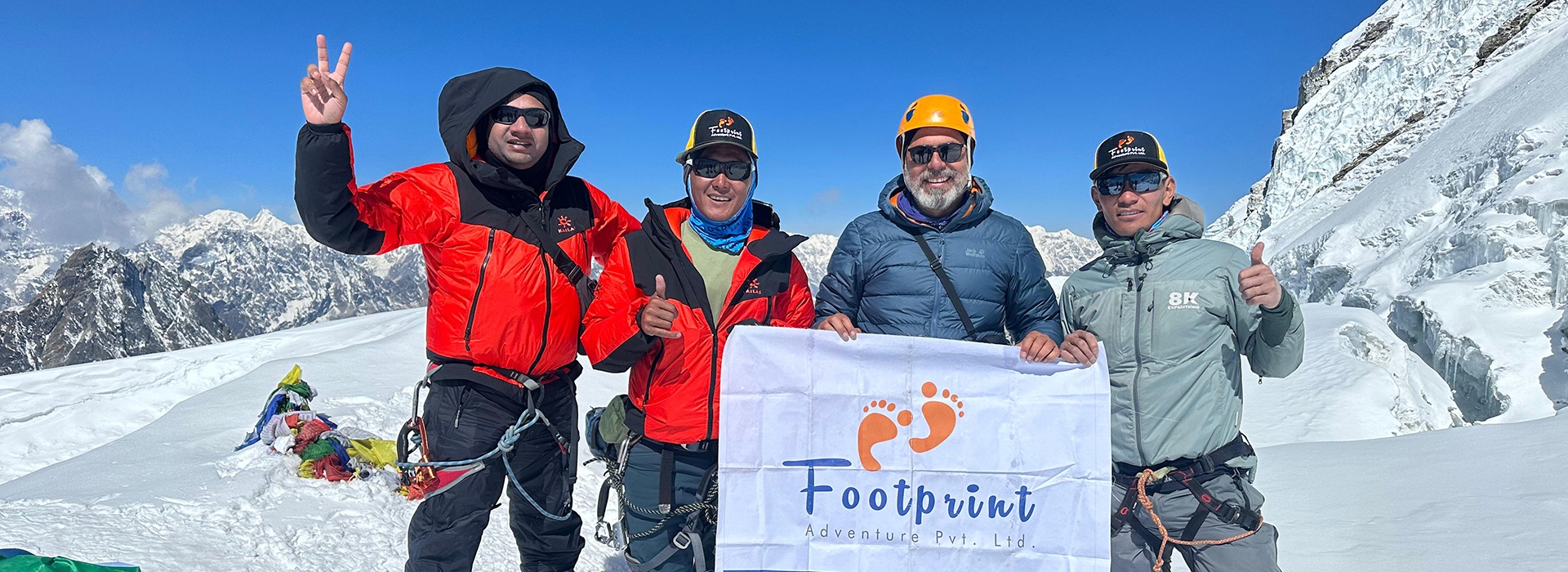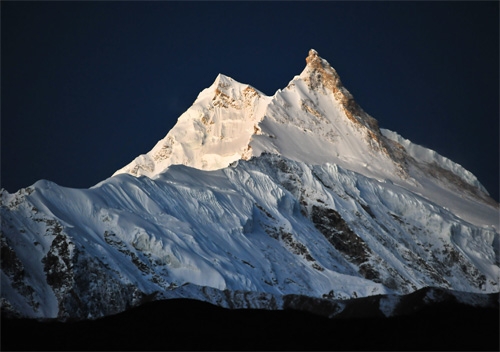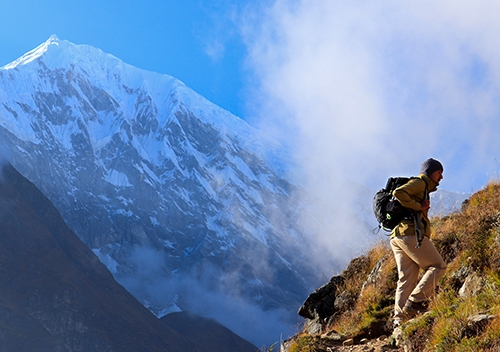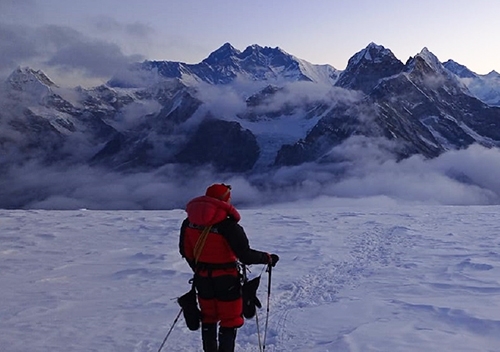Lobuche Peak Climbing with Everest Base Camp Trek is an ultimate adventure in the popular Everest Region of eastern Nepal. Lobuche Peak is located near the town of Lobuche Village and is one of the Khumbu Glacier's giants, rising to an altitude of 6,119 meters to the east and 6,145 meters to the west. The Lobuche Peak, a part of the Everest range, is a popular climbing destination in Nepal, especially in the Everest Region. This adventure takes us around the mountain to its eastern flank. The Lobuche East, which is conveniently close to the trail next to Everest Base Camp, piques the interest of many hikers. This popular climbing peak is at its best in mid-September to mid-December and mid-March through mid-June. During these months, visitors may enjoy magnificent panoramas of the snow-capped mountains, glaciers, landscapes, and amazing terrain. We get to enjoy the lush green hills in the lower portion of the mountains and the crystal clear Himalayas, thanks to the favorable seasons.
The 18-day Lobuche Peak Climbing with Everest Base Camp Trek is one of the highly recommended trips for people who wish to add adventure to their regular Everest Base Camp Trek. This trip will offer the full adventure, challenge, and test your limits before you head to any other expeditions and proper mountaineering. During this trip, you'll be surrounded by full of natural beauties, Sherpa hospitality, beautiful landscapes, monasteries, shrines, and snow-capped mountains all over the region.
Highlights of Lobuche Peak Climbing with Everest Base Camp Trek
- Climbing Lobuche Peak and mountaineering in the incredible Everest Region of Nepal
- Sunrise from the top of the Lobuche Peak, Kalapatthar Viewpoint
- Beautiful views of Mount Everest, Lhotse, Makalu, Cho-Oyu, Nuptse, Ama Dablam, Island Peak, and the Khumbu Icefall
- Scenic flight to the world's most dangerous airport, called Lukla Airport
- Experience the great hospitality of the Sherpa Community, their lifestyle, traditions, and rituals
- Great taste of Nepali cuisine, Sherpa food, and some of the mountain meals
- Explore beautiful villages like Namche Bazaar, Pangboche Village, Lukla Town, and Khumjung Village
- The incredible sense of achievement and personal satisfaction that only adventures like this can provide
- Get a chance to explore the culture of the Khumbu region, Buddhism, and monasteries
Best Season for Lobuche Peak Climbing
The best season for Lobuche Peak Climbing and Everest Base Camp Trek is the spring months (March to May) and fall months (mid-September to mid-December). During these months, the weather is stable, it is likely to be clear skies, and visibility is good for trekking and climbing. Trekkers will enjoy incredible views of Mount Everest and the surrounding Himalayan peaks. The Lobuche Peak Climbing with EBC in the spring months has blooming rhododendrons, moderate temperatures, and busy trails. Autumn months are another good time for this trip with refreshing dry air and pleasant temperatures. There are also stunningly clear skies, perfect for photography and panoramic mountain views.
How To Prepare Yourself for the Lobuche Peak Climbing with the Everest Base Camp Trek?
Make sure you start training well in advance for the Lobuche Peak climb. You will be out for several days at high elevations with a long (10–12 hour) summit push. Lobuche Peak elevation reaches 6,119 meters (20,075 feet); therefore, you need to be in good shape. Start preparing at least 3–4 months before you head to the trail.
Focus on four important factors: Fitness Level, Mental Preparation, Technical Skills, and Proper Equipment. With a loaded pack, you can develop stamina with running, cycling, swimming, stair climbing, and hiking. You can expect to be hiking for 5–6 hours a day on steep, uneven terrain in a remote setting.
Be sure to pack smartly. You’ll be out for about 18 days in challenging and remote conditions, so pack everything you need. Pay attention to detail, don't forget your headlamp, sun protection, sunglasses, ORS (oral rehydration salts), medications, etc.
Why Choose Footprint Adventure for Lobuche Peak Climbing and Everest Base Camp Trek for 2025/2026?
At Footprint Adventure, we prioritize safety, preparation, and personalized service. Our Lobuche Peak and Everest Base Camp trips are designed to allow adequate acclimatization and support. Our skilled guides, dependable team, and 24/7 communication ensure a smooth and enjoyable journey. We have built a community of happy trekkers with many returning to travel with us. With great accommodation, quality planning, and genuine concern for every traveler, we are focused on providing you with a safe and memorable Himalayan adventure. Our team follows sustainable practices, supports local communities, and maintains a high success rate on all treks. We work with solo travelers and groups to ensure a safe and memorable experience. Footprint Adventure is one of the best companies for Lobuche Peak Climbing and expert in mountain adventure, such as trekking, peak climbing, hiking, and mountain flights.




